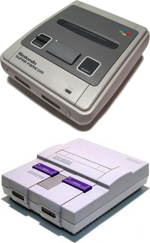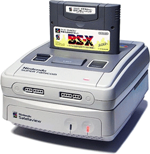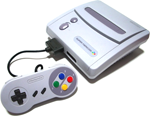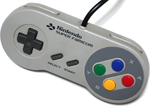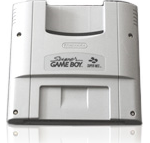
The 16-bit Super Famicom was an impressive system when it was released, outstripping the graphic and sound capabilities of its competition.
Throughout its long life, the Super Famicom featured a small number of accessories and peripherals compared to many other Nintendo systems. While some, such as the Super Scope and Satellaview, only received moderate popularity, others, such as the Super Game Boy and SNES Mouse, were much more successful.
Super Famicom hardware uses serial code SHVC (Super Home Video Computer), while the U.S. SNES hardware uses serial code SNS (Super Nintendo System). In PAL regions (Europe, Australia), the serial code SNSP (Super Nintendo System PAL) is used. Despite the different codes, the model numbers for hardware components are shared across the different regions.
